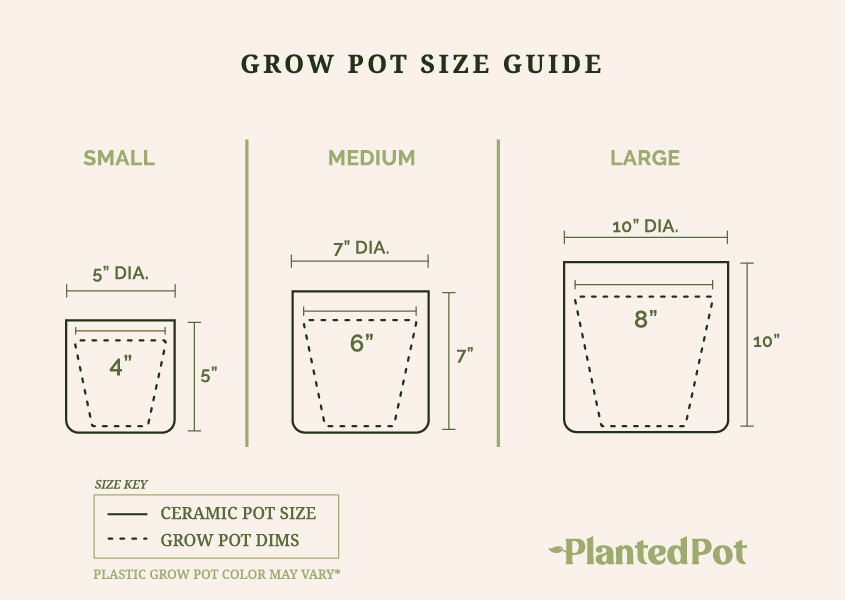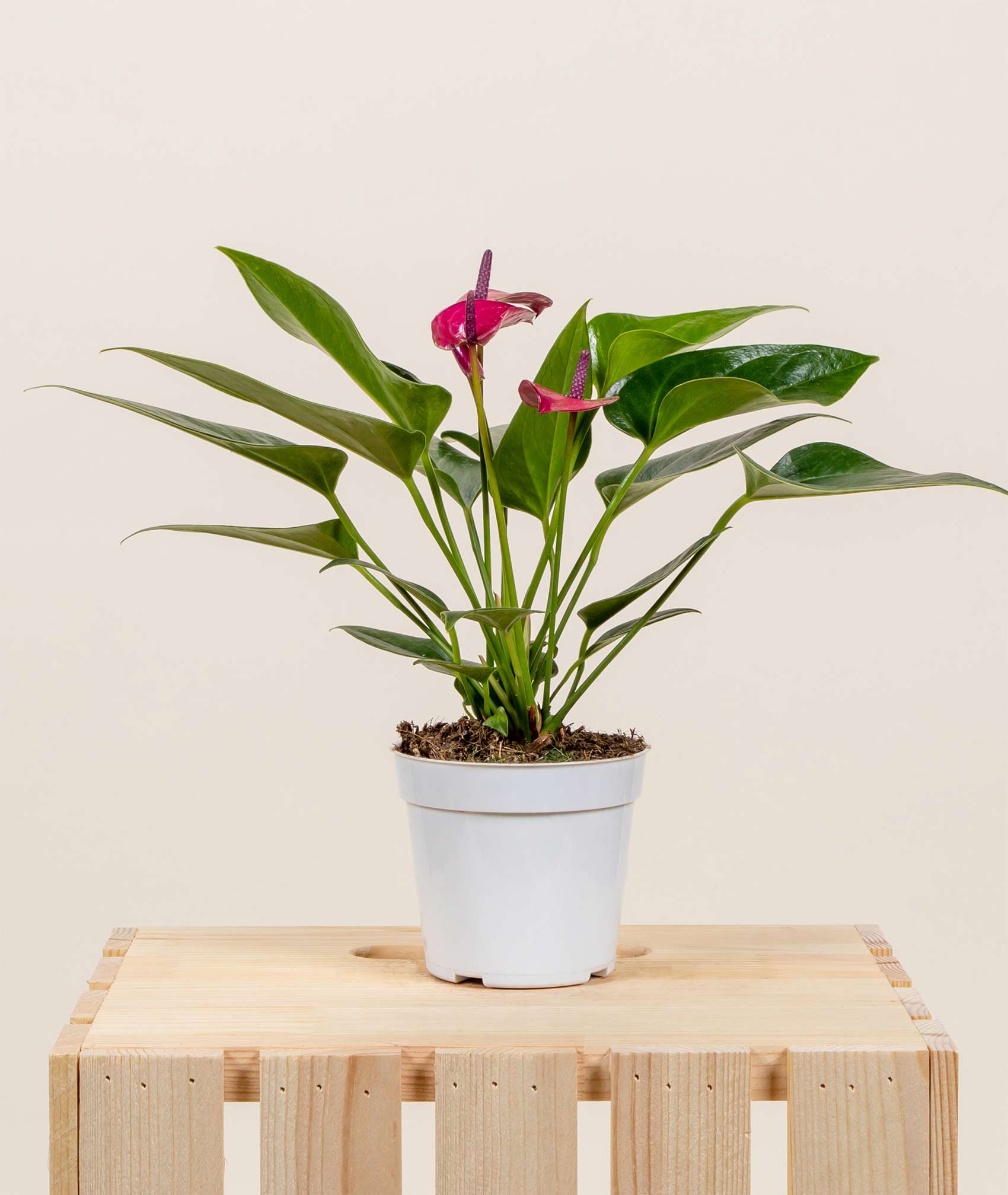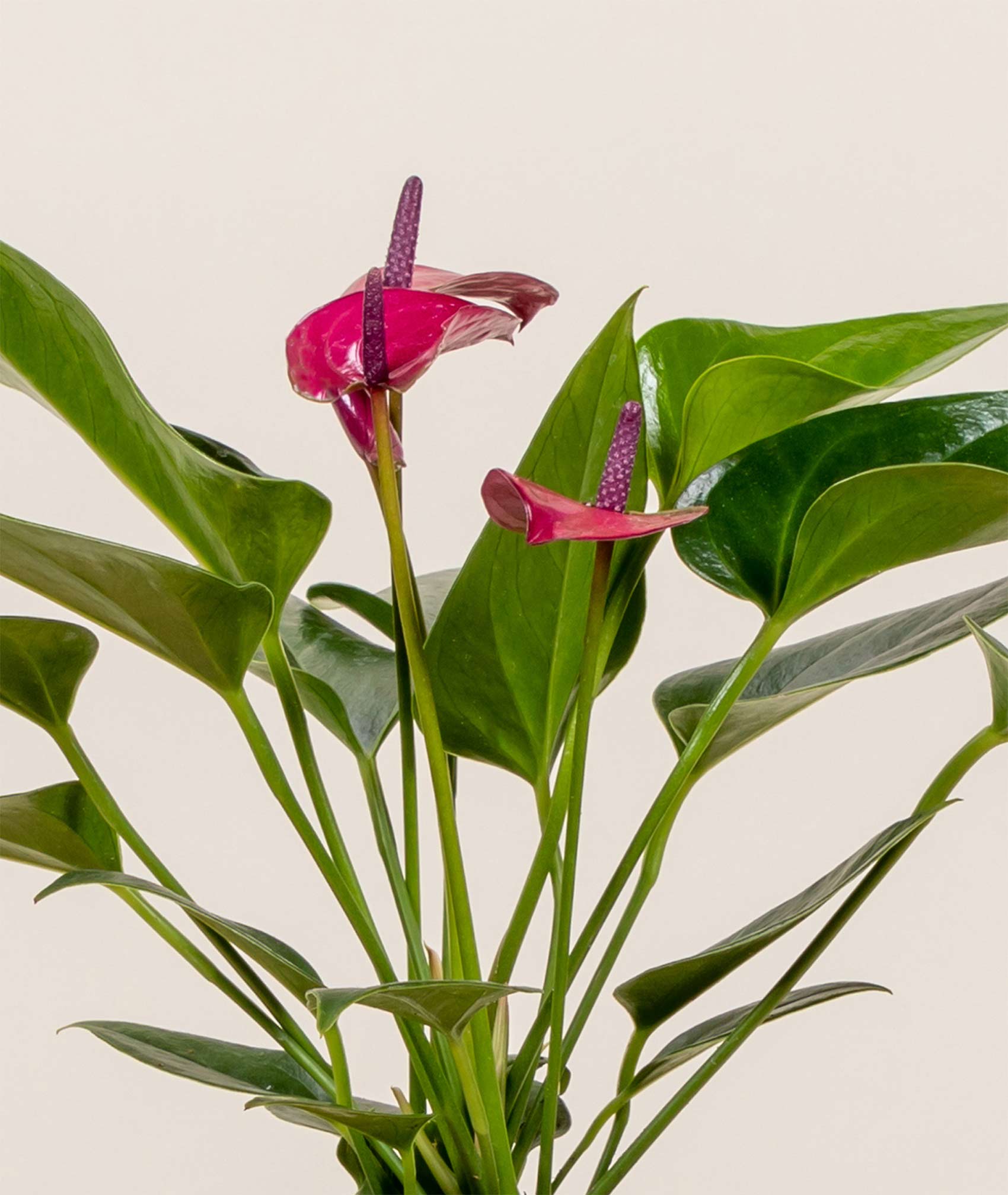
Purple Anthurium
$28
 Plastic grow pots come in different colors, you may receive a black or rust colored pot.
Plastic grow pots come in different colors, you may receive a black or rust colored pot.
Many people think that the brightly colored growths on the Anthurium plant are flowers, but they’re actually leaves! That’s right, the heart-shaped “flowers” are called spathes, and these delightful waxy leaves are responsible for the good looks of Anthurium plants. The spathes come in quite a few colors, each as alluring as the last. Purple is known as the color of royalty, so decorate your castle like the Kings and Queens you are! The Anthurium Purple plant prefers a coco coir-based soil mixture and bright, indirect sunlight. Between watering, allow the soil to dry out. The Anthurium Purple doesn’t need much to thrive and amaze your house guests!
Bright indirect light
Every 1-2 weeks (when the soil is dry to the touch)
65° – 85° F
Related Products
Purple Anthurium
What better way to enhance your home’s appearance than with the Purple Anthurium plant? Also known as the Flamingo Flower, this plant’s beauty is attention-grabbing and certain to make your home look more beautiful. Your guests will not be able to stop gushing over it and asking you more about it.
The Purple Anthurium plant is perfect for plant-owners of all skill levels. It is one of the best house-warming gifts too! Plant care for the Purple Anthurium is simple with this in-depth guide. Read on to learn more about this plant and get some tips on caring for it and why you should keep more than one.
What is a Purple Anthurium?
The Purple Anthurium is a flowering tropical plant native to Colombia and Ecuador and is one of many colored variations of the Anthurium andraeanum plants. Purple Anthurium andraeanums are part of the Anthurium family, the largest family of plants within the Araceae genus.
At first glance, this plant looks look fake and plastic, but that’s only because its dark green heart-shaped leaves have a glossy appearance. The leaves contrast nicely with the purple flowers, which are not actually flowers but spathes. Spathes are leaves that enclose a creamy colored fleshy stem holding a cluster of flowers called the spadix.

The flowers on the spadix stay in bloom throughout the year. To achieve this and to keep this plant in good health, you’ll need some basic care tips.
Plant Specifics
- Plant Size: The Purple Anthurium is a medium-sized plant that can grow up to 12 to 18 inches tall and a foot wide. The heart-shaped green leaves can grow up to eight inches long. The purple spathes tend to be a few inches short, and the stems containing flowers are around three inches tall.
- Light Requirements: Although the Purple Anthurium will look great no matter where you place it, make sure to keep it someplace that receives plenty of indirect bright light. This plant will also grow in low-light conditions. Direct sunlight is harmful to the Purple Anthurium and can cause the leaves to wilt.
- How Often to Water: Water is important to plants, just as it is vital to people too, and this plant should receive water at least weekly. Avoid overwatering, or your plant can develop root rot and die if neglected. Always allow the soil to dry out completely before giving it freshwater.
- Safe Temperatures to Thrive in: Average room temperature is ideal for the Purple Anthurium. Anything lower than 65 degrees or higher than 85 degrees can affect the plant’s growth and cause it to die. You can also mist the leaves to increase humidity for the plant.
Caring for houseplants is not a daunting task but a responsibility that should be fun. Once you learn how to properly care for the Purple Anthurium, you can teach the easily acquired skills to your kids too!
Why Choose a Purple Anthurium for Your Home?
Anthuriums are versatile plants that be kept in office spaces or used as centerpieces for fancy dinners. Most people keep Purple Anthuriums in their homes for several reasons. It turns out Purple Anthuriums not only make your house appear nicer but could have a positive impact on the health of you and your family.
These botanical ornaments nicely complement living room furniture, but there is a list of reasons why you need this plant in your home.
- Removes Airborne Pollutants: Researchers at NASA conducted a study to see which plants effectively cleared the surrounding toxins in the air. The Anthurium plant was used in the study, demonstrating that these plants could help purify the air indoors.
- Improves Energy: Do you find yourself lacking the appropriate energy levels to get through your day? Research has shown that being surrounded by nature increases vitality. Not everyone lives next to a forest, so one of the easiest ways to bring nature indoors is by owning a couple of Purple Anthuriums.
- Promotes Feelings of Accomplishment: Although the Purple Anthurium is a low-maintenance plant, there is no denying the feelings of accomplishment when you see your hard work rewarded in a healthy plant. Successfully caring for this plant is a confidence booster!

Are Purple Anthurium Plants Good Indoors & Outdoors?
Purple Anthuriums can be kept indoors and outdoors. Unless you are an experienced gardener, it is best to keep this plant inside your home.
If kept outside in a garden, make sure it is kept in the shade and avoid direct sunlight. Indirect light is vital for this plant to stay thriving if it is going to be kept outside. It might be better to keep the Purple Anthurium in a pot with drainage holes so you can easily move it indoors when during colder weather.
Whether you decide to keep the Purple Anthurium as an indoor plant or outside with your flowers, be sure to repot it every two years. Fresh new potting soil and fertilizer will keep your plant thriving for a very long time.
Are Purple Anthurium Plants Pet and Children Friendly?
The Purple Anthurium is a beautiful sight for the eyes, but for the stomach, not so much. This plant is not meant to be eaten because it is mildly toxic for pets and people. It might be best for your pets’ and kids’ safety to place this plant away from where their small hands or paws can reach it. If accidentally ingested, look out for any side effects.
Unwanted side effects include vomiting, diarrhea, and an upset stomach. Contact your local hospital or call Animal Poison Control Center for further assistance.
Purple Anthurium Plant Family Relatives
It is not easy having to highlight a few Anthurium plants when there are over 1000 members of the Anthurium family. They are all great plants with their unique features. Although some of them are rarer than others, here are some Anthurium to consider bringing home:
- Flamingo Flower (Anthurium andraeanum): If the name sounds familiar, then it should because the Anthurium plant is available in different colors. From pink, red, white, and other colors to choose from, you can keep different colored varieties to mix and match your home’s interior.
- Crystal Anthurium Plant (Anthurium crystallinum): One of the most recognizable features of this plant is the white plant veins that stand out in contrast to the dark-colored leaves. The heart-shaped leaves are available in different colors.
Plant Types That Are Similar to the Purple Anthurium Plant
If the color purple is your favorite color or you want to add more dimension to your home, there are other plants you can keep inside as well. With similar care requirements as the Purple Anthurium, you won’t struggle to keep these plants thriving.
- Chinese Evergreen: This plant is known for being hardy and able to withstand a little neglect. The Chinese Evergreen is regarded as good luck by some cultures.
- Calatheas: Unlike other houseplants, the Calathea is considered non-toxic for pets. The leaves are silver and green but are also available in a variety of colors.
Final Thoughts – Purple Anthurium
Whether the color purple is your favorite color or not, there is no denying that the Purple Anthurium is a precious plant to have in your home. You are now ready to apply what you have learned from this guide into your Purple Anthurium plant. If you want to add more plants to your home collection, check out the selection available at Planted Pot!





Reviews
There are no reviews yet.